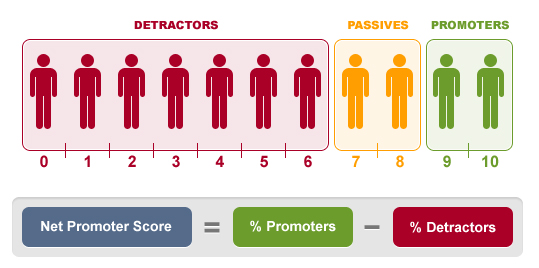The NPS (Net Promoter Score) assesses to what extent a respondent would recommend a certain company, product, or service to his friends, relatives, or colleagues. The idea is simple: if you like using a certain product or doing business with a particular company, you like to share this experience with others.
Net Promoter Score (NPS) is a metric that uses customers’
likelihood to recommend a product, service, or organization as a score for your
customer experience.
What is the NPS (Net Promoter Score)?
The NPS (Net Promoter Score) is a customer loyalty metric
developed in 2003 by management consultant Fred Reichheld of Bain & Company
in collaboration with the company Satmetrix. The objective was to determine a
clear and easily interpretable customer satisfaction score that can be
compared over time or between different industries.
Nowadays, NPS (Net Promoter Score) is used by many large companies as a customer
feedback tool. It gives organization an unambiguous number that is easy to
understand for all employees and useful as input for managers to steer the
company. According to many people the NPS (Net Promoter Score) also gives a good indication of
growth potential and customer loyalty for a company or product.
How to Calculate NPS (Net Promoter Score)?
To calculate your NPS (Net Promoter Score), subtract (-) the percentage (%) of Detractors from the percentage (%) of Promoters. NPS = promoters % - detractors %. For example, if 50% of respondents are Promoters, 10% are Detractors, and 40% are neutral, your NPS (Net Promoter Score) would be 50%-10%=40%.
It uses a scale of 0 (not at all likely) to 10 (extremely
likely) and based on their responses, customers fall into one of 3 categories:
- Promoters respond with a score of 9 or 10
- Neutral respond with a score of 7 or 8
- Detractors respond with a score of 0 to 6
Conclusion
To be clear, NPS (Net Promotor Score) is only a starting point. After the analysis, the real work can begin: improving your organization and taking actions to boost your NPS (Net Promoter Score). This will be a long term project, but the NPS allows you to perfectly assess at which stage your organization is in this growth process.





